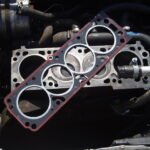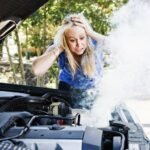
Navigating the Most Common Subaru Issues and Solutions
Introduction
Subaru vehicles are known for their reliability and durability. However, like any other car, they can experience issues from time to time. In this blog post, we will explore some of the most common issues that Subaru owners may encounter and provide solutions to help navigate these challenges.
1. Head Gasket Problems
One of the most well-known issues with Subaru vehicles is head gasket failure. This problem is more prevalent in older models, particularly those manufactured between 1999 and 2010. Symptoms of a failing head gasket may include overheating, coolant leaks, and white exhaust smoke.
To address this issue, it is crucial to have the head gasket replaced by a qualified mechanic. Subaru has made improvements to the head gasket design in newer models, reducing the likelihood of failure. Regular maintenance and keeping an eye on the coolant levels can also help prevent this problem.
2. Oil Consumption
Some Subaru models, especially those with the 2.5-liter engine, may experience excessive oil consumption. This issue can be concerning for owners who find themselves frequently adding oil between oil changes. It is important to monitor the oil levels regularly to prevent engine damage.
If you notice excessive oil consumption, consult a Subaru technician. They can perform a consumption test and determine if the engine requires repair or replacement. Regular oil changes and using the recommended oil viscosity can also help mitigate this problem.
3. CVT Transmission Issues
Subaru vehicles equipped with a continuously variable transmission (CVT) may experience transmission-related problems. These issues can include jerking or shuddering during acceleration, hesitation, or a delay in shifting gears.
If you encounter these problems, it is advisable to have the vehicle inspected by a Subaru specialist. They can diagnose the issue and recommend the appropriate repairs or adjustments. Regular maintenance, such as changing the CVT fluid according to the manufacturer’s recommendations, can also help prevent transmission problems.
4. Suspension Noise
Some Subaru models may develop suspension noise over time. This can manifest as clunking, creaking, or knocking sounds when driving over bumps or uneven surfaces. While it may not affect the vehicle’s performance, it can be an annoyance to the driver and passengers.
To address suspension noise, it is best to have a professional mechanic inspect the suspension components. They can identify any worn or damaged parts and replace them as necessary. Regular inspections and maintenance of the suspension system can help prevent or minimize these noises.
5. Electrical Issues
Electrical problems can occur in any vehicle, including Subaru models. These issues can range from malfunctioning power windows and locks to problems with the audio system or dashboard lights.
If you experience electrical issues, it is recommended to consult a Subaru technician or an auto electrician. They have the expertise to diagnose and repair electrical problems effectively. Regularly checking the battery and ensuring all connections are secure can also help prevent electrical issues.
Conclusion
While Subaru vehicles are generally reliable, it is essential to be aware of the common issues that can arise. By understanding these problems and their solutions, Subaru owners can navigate any challenges that come their way. Regular maintenance, prompt repairs, and consulting qualified professionals are key to keeping your Subaru running smoothly for years to come.




